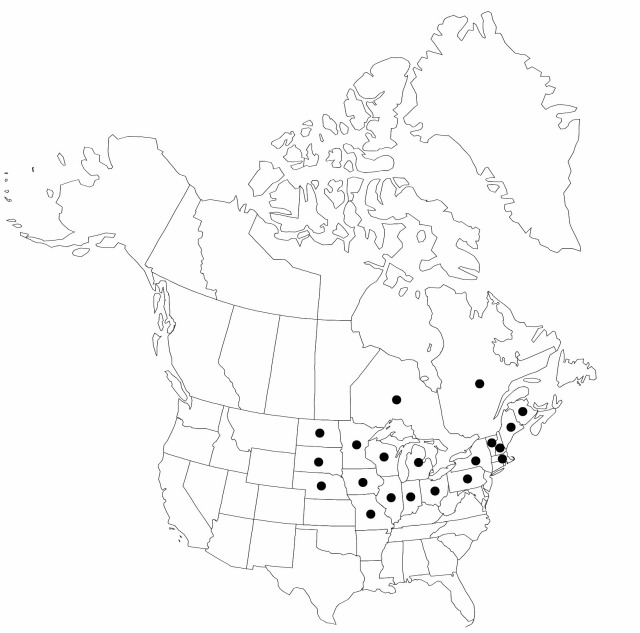Carex haydenii
Amer. J. Sci. Arts, ser. 2, 18: 103. 1854.
Plants cespitose. Culms acutely angled, 30–115 cm, scabrous. Leaves: basal sheaths redbrown, indistinctly ladder-fibrillose; sheaths of proximal leaves glabrous, fronts with redbrown spots, veinless, apex U-shaped; blades 3–5 mm wide. Inflorescences: proximal bract subequal to inflorescence, 2–4 mm wide. Spikes erect; proximal 2–3 spikes pistillate, 1–5 cm × 4–6 mm, base obtuse; terminal 1–2 spikes staminate. Pistillate scales redbrown, longer than perigynia, apex acute or acuminate, awnless. Perigynia divergent, olive-brown with redbrown spots on apical 1/2, veinless, inflated, loosely enclosing achenes, obovoid, 1.5–2.8 × 1.5–2 mm, dull, apex rounded, papillose; beak green, 0.1–0.2 mm. Achenes not constricted, glaucous. 2n = 54.
Phenology: Fruiting Jun–Aug.
Habitat: Wet meadows, moist prairies
Elevation: 0–1,000 m
Distribution

N.B., Ont., Que., Ill., Ind., Iowa, Maine, Mass., Mich., Minn., Mo., Nebr., N.H., N.Y., N.Dak., Ohio, Pa., S.Dak., Vt., Wis.
Discussion
Carex haydenii is a species of seasonally saturated soils in open habitats. It appears to be declining in abundance with changes in land use.
Carex haydenii is often confused with C. stricta; it can be identified by the inflated perigynia that are rounded apically, acute scales, and glabrous leaves and sheaths. Only basal sheaths of C. haydenii are ladder-fibrillose. Although often sympatric with C. stricta and C. nigra, no hybrids appear to be formed.
Selected References
None.
Lower Taxa
"shortened" is not a number.
